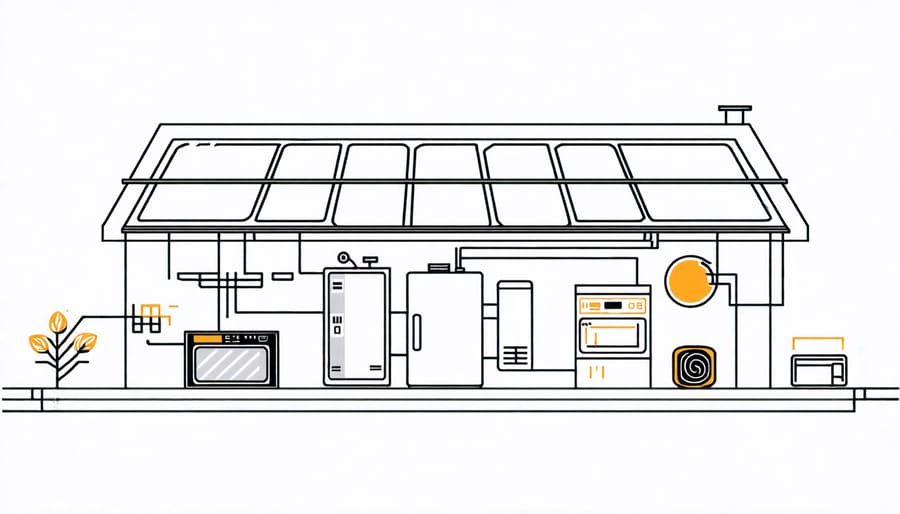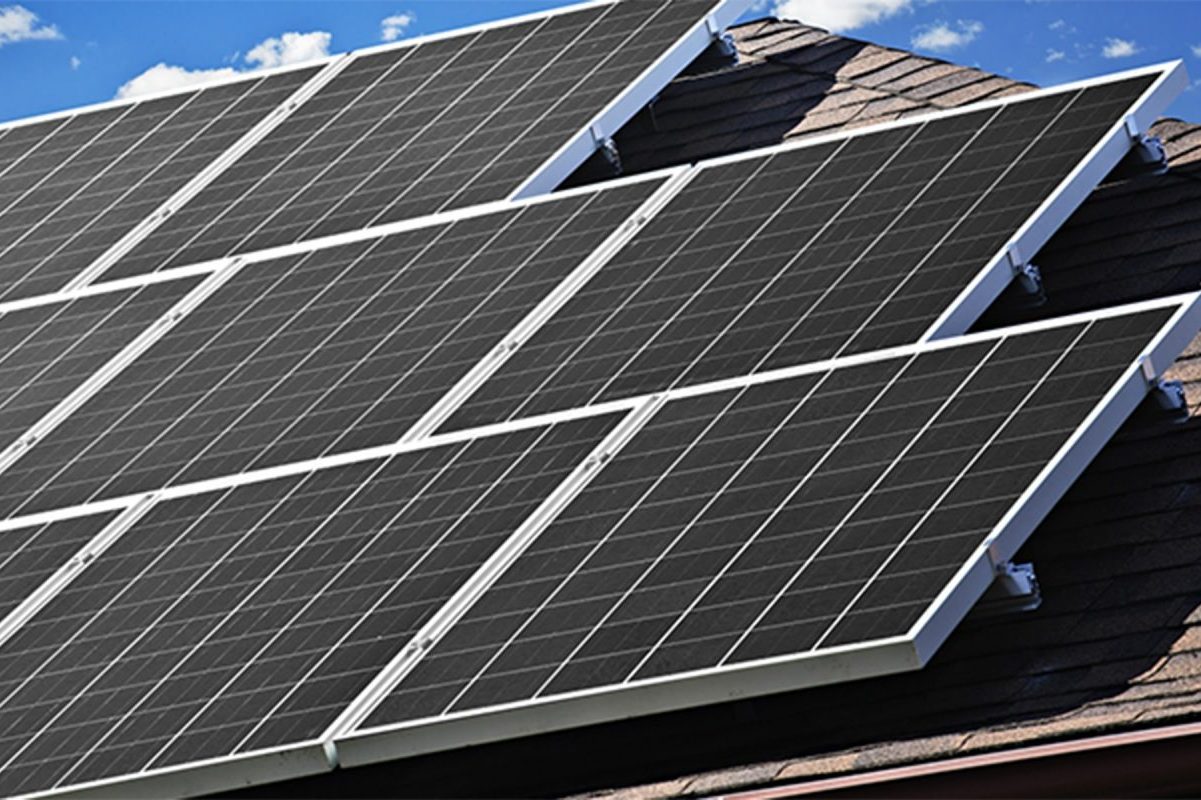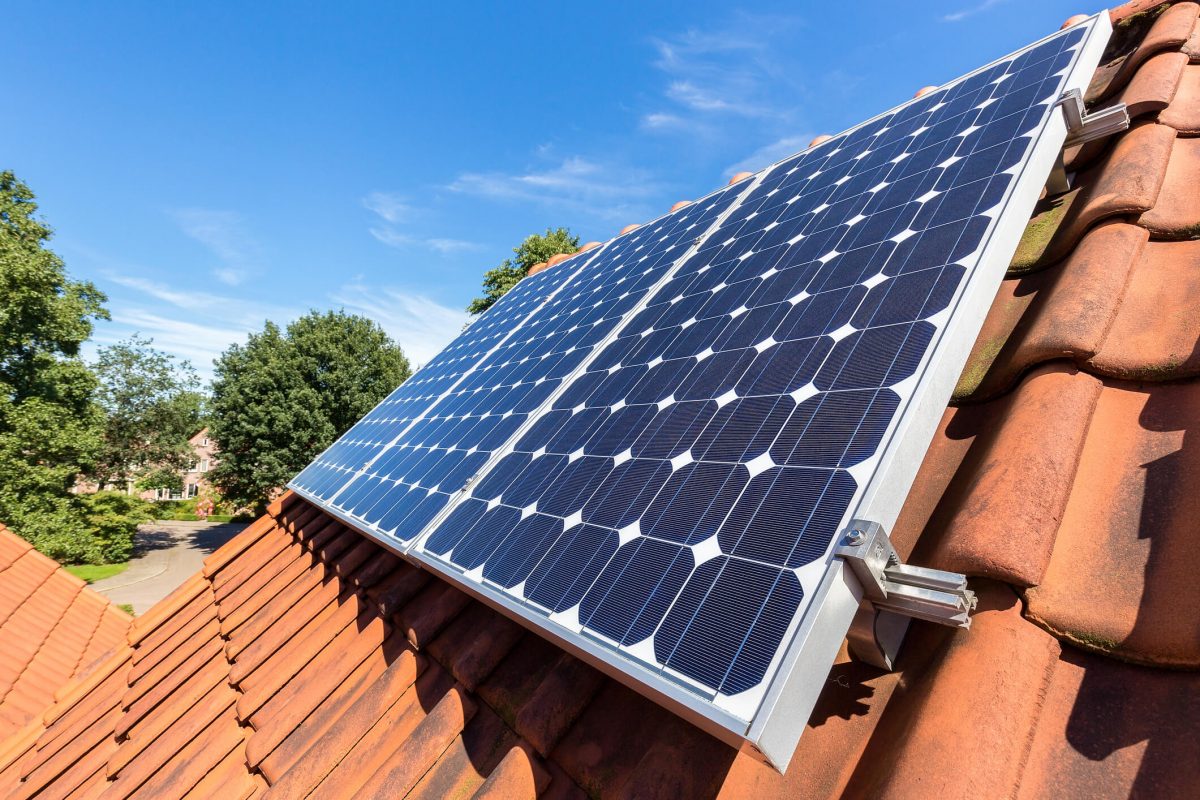Harness solar energy efficiently by positioning your solar panels where they receive direct sunlight most of the day. Select high-quality, cost-effective materials and build a frame that supports panels and maximizes sunlight exposure. Install a heat exchanger to transfer solar-heated air or liquid into your home’s existing heating system, significantly reducing energy costs. Insulate pipes and ducts thoroughly to prevent heat loss and ensure maximum efficiency.
Understanding Solar Heating Systems
What is a Solar Heating System?
A solar heating system is an environmentally friendly way to harness the sun’s energy to heat your home. At its core, it consists of solar collectors, a heat transfer system, and a storage tank. Solar collectors, which are often mounted on rooftops, absorb sunlight and convert it into heat. This heat is then transferred to your home’s heating system, either directly or via a heat exchanger. To effectively manage this, it’s crucial to understand the maximum voltage of a solar panel, as this ensures that your system operates efficiently.
The stored heat in the tank can be used for space heating or to warm water, reducing dependence on conventional energy sources and lowering utility bills. Solar heating systems are highly beneficial for eco-conscious homeowners and those looking to reduce energy costs. With proper setup, they provide long-term savings and contribute to a sustainable lifestyle, making them a smart investment for future-proofing your home against rising energy costs.

Benefits of Solar Heating Systems
Switching to a solar heating system presents both environmental and financial gains, making it an attractive option for homeowners focused on sustainability and cost-efficiency. By harnessing the sun’s energy, solar heating systems significantly reduce reliance on fossil fuels, which contribute to pollution and global warming. This eco-friendly approach not only helps reduce your carbon footprint but also promotes the responsible use of natural resources, aligning perfectly with green living aspirations.
Financially, solar heating systems offer substantial savings. Once installed, these systems harness free solar energy, leading to lower utility bills. Over time, the reduction in energy costs can offset the initial installation expenses, resulting in notable long-term savings. Furthermore, various government incentives and rebates are often available to homeowners who invest in solar technology, making the transition even more financially viable.
In essence, adopting a solar heating system is a forward-looking choice, blending environmental responsibility with economic benefit. By opting for DIY solutions, you can further minimize costs while enjoying the satisfaction of contributing to a healthier planet. Embrace this sustainable technology as a step towards energy independence and a brighter, more sustainable future.
Materials and Tools Needed
Essential Materials
Building your own solar heating system is an exciting step toward sustainable living. The primary components you’ll need include solar panels, storage tanks, piping, a pump, and a heat exchanger. Solar panels are the heart of your system, capturing sunlight to generate heat. Opt for panels that are both efficient and cost-effective, ensuring long-term savings. Storage tanks, often insulated, keep the heated water ready for use when the sun isn’t shining. Next, ensure you have proper piping, typically copper or PEX, to transport heated water. A pump is essential to circulate water through your system, while a heat exchanger transfers the collected heat to your home’s system. By understanding and assembling these components, you can significantly reduce your energy bills and environmental impact.

Required Tools
To successfully install and assemble your DIY solar heating system, you’ll need a few essential tools. A drill with assorted bits is crucial for making precise holes and securing components. You’ll also need a set of wrenches and screwdrivers for assembling parts and connecting plumbing elements. A tape measure and level will ensure accurate alignment and placement. Safety glasses and gloves are vital for personal protection during installation. A ladder might be necessary for roof access. Wire cutters and strippers will come in handy for any electrical work. Lastly, a caulking gun will help seal joints and prevent leaks, ensuring your system functions efficiently. With these tools, you’re well on your way to harnessing solar energy and cutting down those energy bills.
Step-by-Step Installation Guide
Preparing the Site
Preparing your site for a DIY solar heating system involves a few key steps that ensure optimal performance and efficiency. First, choose a location that receives maximum sunlight, ideally facing south for the best exposure in the Northern Hemisphere. Clear any obstructions like trees or other structures that might cast shadows over your solar panels. This step is crucial as it significantly affects energy absorption and heat production.
Next, evaluate your roof’s condition and structure. Ensure it is strong enough to support the weight of solar panels and is in good repair to avoid future maintenance interruptions. If your roof isn’t suitable, consider alternative placements like a ground-mounted system in your yard, still aiming for direct sunlight exposure.
Additionally, check local regulations and homeowner association guidelines, if applicable, to ensure there are no restrictions or permits required for installing solar panels. By taking these preparatory steps, you’ll set a solid foundation, allowing your DIY solar heating system to function efficiently and provide the eco-friendly energy savings you’re aiming for.
Installing the Solar Panels
To install the solar panels for your DIY solar heating system, start by selecting a location that maximizes sun exposure—ideally, a south-facing section of your roof or yard. Before you begin the installation, check local regulations and get needed permits. Secure the mounting brackets onto the surface using corrosion-resistant screws, ensuring they are aligned and properly spaced to support the panels.
Once the mounting structure is ready, carefully lift and place the solar panels onto the brackets. It’s often best to have a partner assist you during this step to ensure safety and accuracy. Connect the panels to each other using the provided connecting cables. Ensure each connection is firm to prevent water ingress and maintain efficient energy flow.
Next, connect the panels to the charge controller, which will regulate the energy the panels generate. This step is crucial for preventing battery overcharge if your system includes energy storage. Finally, connect the controller to your home’s water system, enabling it to heat your water supply. For detailed guidance on installing solar panels securely, consider consulting additional resources.
With your panels set up, you can now enjoy eco-friendly heating while saving on energy bills. Remember, by investing in solar heating, you’re contributing to a greener planet and lower utility costs.

Connecting to Your Home’s Heating System
Integrating your DIY solar heating system with your existing home heating can maximize efficiency and significantly reduce your energy bills. Start by assessing the compatibility of your current heating system with the solar setup. Most conventional systems, like radiators or underfloor heating, can be easily adapted to work in tandem with solar heaters. The key here is the heat exchanger, which allows your solar system to transfer heat to the water in your conventional system without mixing the fluids.
You’ll need to install this component between your solar panels and your home heating system. Check the specifications of your current setup to ensure you choose a compatible heat exchanger. Solar-heated water can be used as a pre-heating source, reducing the energy your conventional system consumes to reach optimal temperatures, especially during sunny days.
To ensure a smooth integration, consider using an automatic temperature control system. This system can switch between solar and conventional heating, ensuring maximal use of solar energy while maintaining comfort levels. Remember, regular maintenance of both your solar panels and heat exchanger is crucial for optimal operation. By effectively combining these systems, you not only save money but also take a significant step towards a more sustainable way of living.
Ensuring System Efficiency
To ensure your DIY solar heating system runs efficiently, regular maintenance and optimization are key. Start by keeping your solar panels clean and free of debris, as even a thin layer of dust can reduce their efficiency. Inspect the panels periodically for any damage or wear. Checking seals and insulation in your system can prevent heat loss, maximizing the warm air your setup produces. Additionally, tweaking your system to match seasonal changes can improve performance. For instance, adjusting the tilt of your panels in winter months can capture more sunlight and heat. If your system includes a fan or pump, ensure they are routinely serviced and replace any parts that show signs of aging. Monitoring your system’s output and energy savings using solar energy management systems can further help to boost home efficiency. With these simple practices, you’ll enjoy the personal and financial benefits of a well-maintained solar heating solution.
Common Myths About DIY Solar Systems
Many people are intrigued by the idea of harnessing solar energy at home, yet a number of myths can make DIY solar systems seem daunting. One common misconception is that installing a solar heating system is extremely complex and only suitable for professionals. In reality, a growing number of resources and kits make it easier than ever for homeowners to undertake these projects themselves. With straightforward instructions and readily available support, individuals with basic DIY skills can successfully set up their own systems.
Another myth suggests that DIY solar projects are prohibitively expensive. While it’s true that initial investments are required, the long-term savings on energy bills often outweigh the upfront costs. Plus, many DIY solar installations are eligible for tax credits, further reducing the overall expense.
Some might worry about the efficiency of DIY systems compared to commercial ones. While commercial systems are optimized by professionals, DIY systems can be highly effective if planned and executed properly, especially in sunny regions. These systems can significantly lower your reliance on traditional energy sources, promoting sustainable living.
Embracing DIY solar heating not only helps the planet but also provides personal financial benefits, making it an appealing choice for those looking to lower bills and reduce their carbon footprint. With enthusiasm, patience, and proper guidance, the journey to solar self-sufficiency is more achievable than ever.
Maximizing Financial Benefits
Exploring ways to maximize financial benefits is essential when considering DIY solar heating systems. These systems offer a proactive approach to decreasing energy bills and promoting sustainable living. Begin by assessing your home’s energy requirements and identifying areas where solar heating can serve your needs efficiently. Investing time in planning can lead to substantial savings over traditional energy sources. For instance, when comparing solar shingles vs. panels, consider factors like roof suitability and long-term maintenance costs. Additionally, research potential rebates and tax incentives offered by governments and utility companies, as these can significantly lower initial expenses. By integrating solar heating into your home, not only do you contribute to a healthier planet, but you also increase your property’s value. Ultimately, through careful evaluation and implementation of these strategies, homeowners can enjoy both environmental and financial rewards.
Conclusion
Embarking on a DIY solar heating project offers numerous advantages that make it an appealing endeavor for eco-conscious homeowners. Firstly, it presents an opportunity to significantly reduce your energy bills by harnessing the sun’s free and abundant energy. This cost-effective solution not only helps you save money but also increases the value of your home by embracing greener technology. Furthermore, by choosing to install a solar heating system on your own, you’re contributing to the well-being of the environment, reducing your carbon footprint, and promoting sustainable living. The process itself can be incredibly rewarding, providing a hands-on learning experience that empowers you to take control of your energy consumption. With the right guidance, tools, and a step-by-step approach, setting up a solar heating system becomes accessible and manageable. By embracing this renewable energy solution, you’re not only enhancing your home but also paving the way for a brighter, more sustainable future for generations to come.









